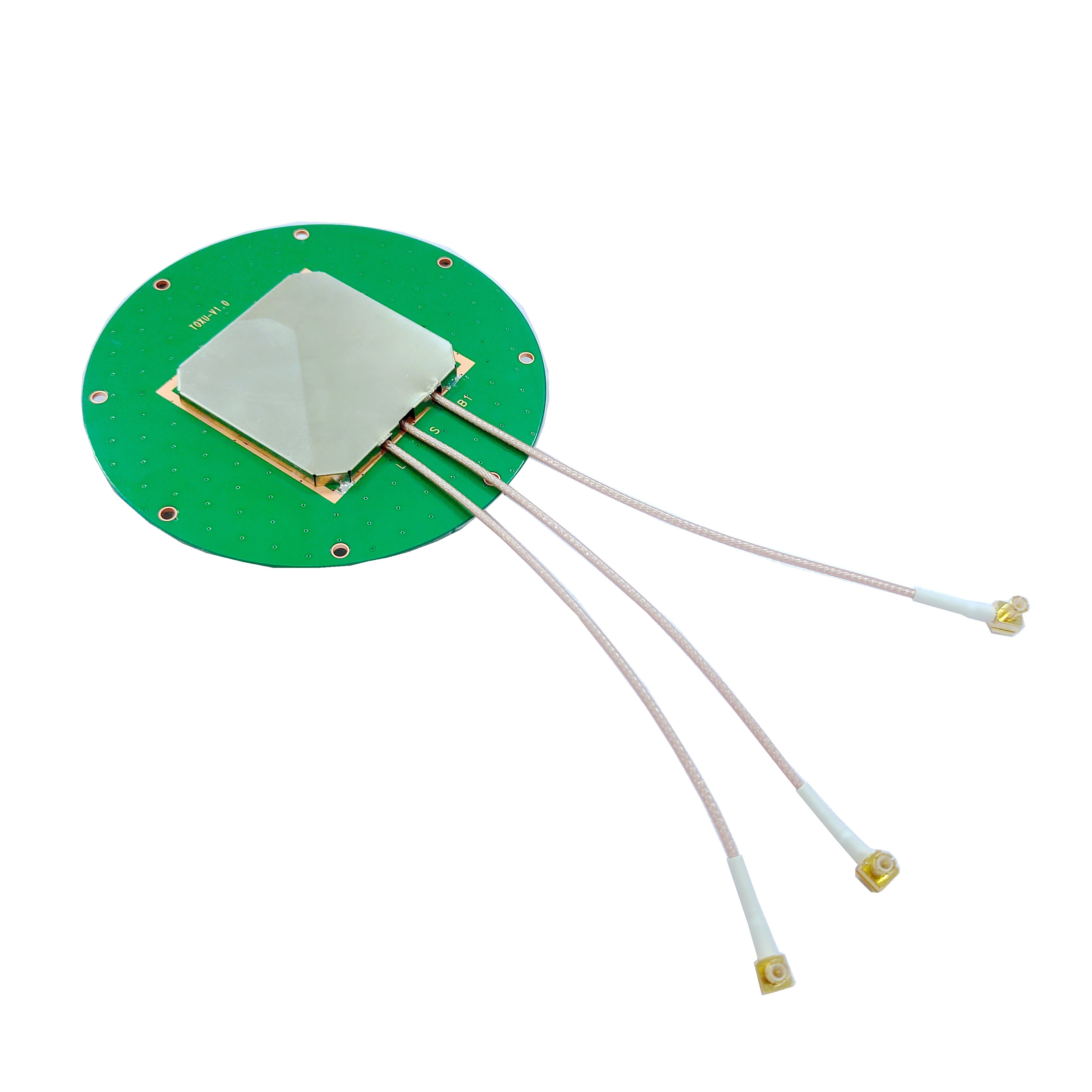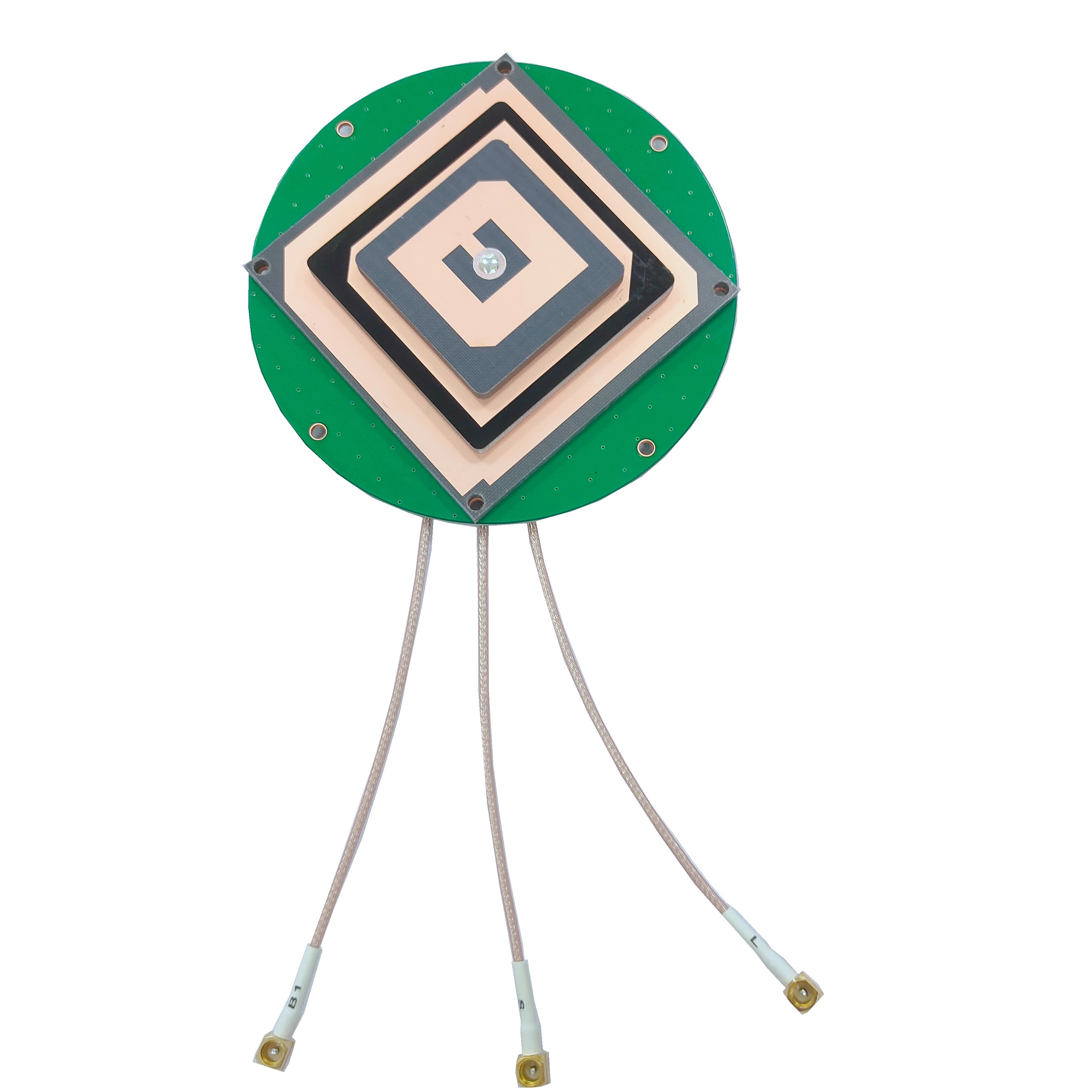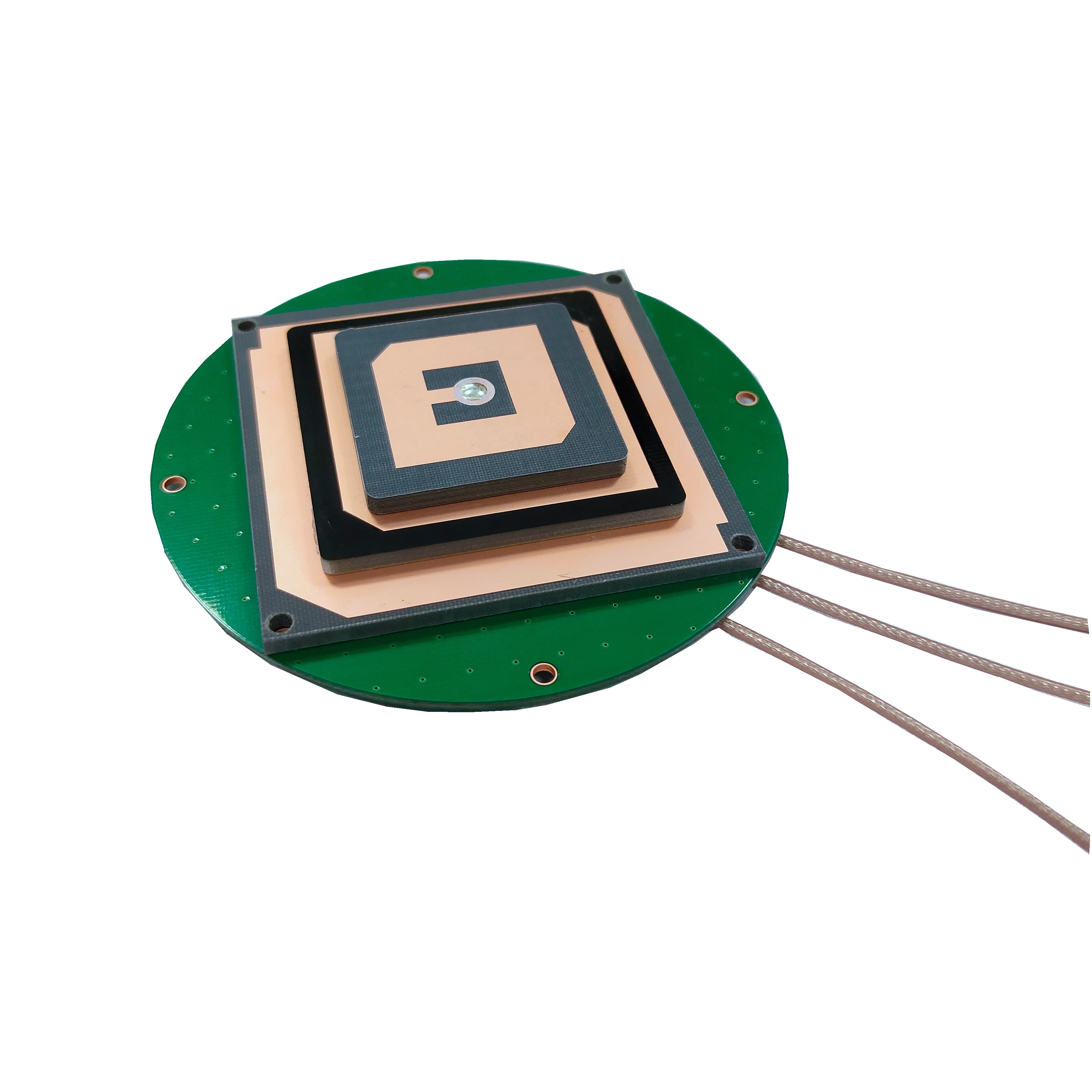5.1 Current Applications
Precision GNSS survey antennas have a wide range of applications across various industries, where their high - precision positioning capabilities are essential for ensuring the accuracy and reliability of geospatial data. These applications leverage the unique features of precision GNSS survey antennas to address specific challenges and meet the demands of different sectors.
In the construction industry, precision GNSS survey antennas are used extensively throughout the entire project lifecycle, from the initial site survey and design phase to the construction and maintenance phases. During the site survey phase, these antennas are used to create detailed topographic maps of the construction site, which provide critical information for the design of the project. For example, in the construction of a highway, a precision GNSS survey antenna can be used to measure the elevation, slope, and curvature of the terrain, allowing engineers to design a highway that is both safe and cost - effective. During the construction phase, precision GNSS survey antennas are used to guide the placement of construction equipment and materials. For instance, in the construction of a high - rise building, a precision GNSS survey antenna can be mounted on a crane to accurately position steel beams and concrete slabs, ensuring that they are aligned correctly according to the design plans. This not only improves the efficiency of the construction process but also reduces the risk of errors and rework. After the construction is completed, precision GNSS survey antennas are used for maintenance and monitoring. For example, they can be used to monitor the deformation of the building over time, detecting any small changes in position that may indicate structural problems.
The mining industry is another major user of precision GNSS survey antennas. In mining operations, accurate positioning is crucial for a variety of tasks, including mine planning, ore extraction, and safety management. During the mine planning phase, precision GNSS survey antennas are used to map the surface and underground features of the mine, such as the location of ore deposits, tunnels, and shafts. This information is used to design the mining layout and determine the most efficient way to extract the ore. During ore extraction, precision GNSS survey antennas are used to track the position of mining equipment, such as excavators, haul trucks, and loaders. This allows mine operators to optimize the movement of the equipment, reducing fuel consumption and increasing productivity. For example, by using a precision GNSS survey antenna to track the position of a haul truck, the operator can ensure that the truck takes the shortest and most efficient route from the excavation site to the ore processing plant. Precision GNSS survey antennas are also used for safety management in mines. They can be used to monitor the stability of the mine walls and roofs, detecting any potential collapses before they occur. Additionally, they can be used to track the location of miners underground, ensuring that they are in safe areas and can be quickly evacuated in case of an emergency.
In the field of agriculture, precision GNSS survey antennas are playing an increasingly important role in the adoption of precision agriculture techniques. Precision agriculture aims to optimize crop production by using advanced technologies to monitor and manage agricultural fields on a site - specific basis. Precision GNSS survey antennas are used to provide accurate positioning data for a variety of precision agriculture applications, such as variable - rate application (VRA) of fertilizers, pesticides, and irrigation water. With the help of a precision GNSS survey antenna, a farmer can create a detailed map of the field that shows variations in soil fertility, crop yield, and other factors. Based on this map, the farmer can then apply the appropriate amount of fertilizers, pesticides, or irrigation water to each specific area of the field, rather than applying a uniform amount across the entire field. This not only reduces the cost of inputs but also minimizes the environmental impact of agriculture by reducing the amount of chemicals and water used. Precision GNSS survey antennas are also used for automated guidance of agricultural machinery, such as tractors and harvesters. By mounting a precision GNSS survey antenna on a tractor, the farmer can program the tractor to follow a precise path across the field, ensuring that the machinery does not overlap or miss any areas. This improves the efficiency of the farming process and reduces the operator's workload.
The environmental monitoring sector also relies heavily on precision GNSS survey antennas. These antennas are used to collect accurate geospatial data for a variety of environmental monitoring applications, such as monitoring the melting of glaciers, tracking the movement of tectonic plates, and assessing the impact of climate change on ecosystems. For example, in glaciology, precision GNSS survey antennas are installed on glaciers to measure their movement and thickness changes over time. By tracking the position of the antenna, scientists can determine the rate at which the glacier is melting and predict how it will respond to future climate change. This information is crucial for understanding the impact of climate change on sea levels and for developing strategies to mitigate its effects. In seismology, precision GNSS survey antennas are used to monitor the movement of tectonic plates. The data collected from these antennas can help scientists better understand the processes that cause earthquakes and volcanic eruptions, and improve the accuracy of earthquake predictions. Additionally, precision GNSS survey antennas are used to monitor the health of ecosystems, such as forests and wetlands. By mapping the location and extent of these ecosystems, scientists can assess the impact of human activities, such as deforestation and urbanization, and develop conservation strategies to protect them.
5.2 Future Trends
The field of precision GNSS survey antennas is constantly evolving, driven by advancements in technology and the growing demand for more accurate, reliable, and efficient geospatial data. Several key trends are emerging that are expected to shape the future of precision GNSS survey antennas and expand their applications across various industries.
One of the most significant future trends is the integration of artificial intelligence (AI) and machine learning (ML) technologies into precision GNSS survey antenna systems. AI and ML have the potential to revolutionize the way precision GNSS survey antennas operate by enabling them to adapt to changing environmental conditions, improve signal processing efficiency, and enhance positioning accuracy. For example, AI - powered algorithms can be used to analyze the characteristics of the received GNSS signals in real - time and automatically adjust the antenna's parameters, such as the gain of the LNA and the filter settings, to optimize signal reception. This adaptive adjustment can help the antenna maintain high performance even in the presence of EMI, multipath interference, and other environmental factors. ML algorithms can also be used to improve the accuracy of multipath mitigation. By training ML models on large datasets of GNSS signals that include both direct and multipath components, the models can learn to identify and predict the characteristics of multipath signals. This allows the receiver to more effectively subtract the multipath component from the received signal, reducing the impact of multipath on positioning accuracy. Additionally, AI and ML can be used for the early detection of jamming and spoofing attacks. By analyzing patterns in the received signals, AI algorithms can identify anomalies that indicate the presence of jamming or spoofing and trigger alerts to the user. This enables the user to take appropriate countermeasures, such as switching to a backup positioning system or adjusting the antenna's location.
Another important future trend is the development of miniaturized and low - power precision GNSS survey antennas. As the demand for portable and wearable surveying devices increases, there is a growing need for smaller and more energy - efficient precision GNSS survey antennas. Miniaturization of the antenna can be achieved through the use of advanced manufacturing techniques, such as microelectromechanical systems (MEMS) technology and 3D printing. MEMS technology allows for the fabrication of tiny antenna components with high precision, enabling the development of compact antennas that can be integrated into small devices such as smartphones, tablets, and wearable sensors. 3D printing, on the other hand, offers the flexibility to create complex antenna structures that are difficult to manufacture using traditional methods, while also reducing the weight and cost of the antenna. Low - power design is also crucial for portable and wearable devices, as they typically rely on battery power. Future precision GNSS survey antennas will be designed with low - power LNAs and other components that consume minimal energy, while still maintaining high performance. This will allow the antennas to operate for longer periods of time on a single battery charge, making them more suitable for field surveying applications where access to power sources is limited.
The expansion of multi - constellation and multi - frequency capabilities is another key future trend for precision GNSS survey antennas. Currently, most precision GNSS survey antennas support multiple constellations such as GPS, Galileo, GLONASS, and BeiDou. However, future antennas will likely support an even wider range of constellations, including regional systems like QZSS and IRNSS, as well as emerging constellations such as the Chinese BeiDou - 3 and the European Galileo Second Generation. This increased constellation support will provide a greater number of available satellites, improving signal availability and positioning accuracy in challenging environments. In addition to multi - constellation support, future precision GNSS survey antennas will also support more frequency bands. GNSS satellites transmit signals in multiple frequency bands, each with different characteristics. For example, the GPS L1 band (1.57542 GHz) is widely used for civilian applications, while the L2 (1227.60 MHz) and L5 (1176.45 MHz) bands offer higher precision and better resistance to interference. By supporting multiple frequency bands, precision GNSS survey antennas can take advantage of the unique features of each band to improve positioning accuracy and reliability. For example, using signals from both the L1 and L5 bands can help mitigate the effects of ionospheric delay, which is a major source of positioning errors. Ionospheric delay occurs when GNSS signals pass through the Earth's ionosphere, where the charged particles in the ionosphere cause the signals to slow down. The delay varies depending on the frequency of the signal, so by measuring the delay at two different frequencies, the receiver can calculate and correct for the ionospheric delay, improving the positioning accuracy.
The development of smart and connected precision GNSS survey antenna systems is also expected to be a major future trend. Smart antenna systems will be equipped with a variety of sensors, such as temperature sensors, humidity sensors, and vibration sensors, to monitor the environmental conditions and the status of the antenna itself. This sensor data can be used to optimize the antenna's performance and provide early warning of potential failures. For example, if the temperature sensor detects that the antenna is operating at a temperature above its recommended range, the system can automatically adjust the cooling mechanism or alert the user to take action. Connected antenna systems will be able to communicate with other devices and systems, such as GNSS receivers, data processing centers, and cloud - based platforms, via wireless networks such as Wi - Fi, Bluetooth, and cellular networks. This connectivity will enable real - time data transmission and remote monitoring and control of the antenna system. For example, surveyors can remotely access the data collected by the antenna from a data processing center, allowing them to analyze the data and make decisions in real - time. Additionally, connected antenna systems can be updated with new firmware and software remotely, ensuring that they always have the latest features and performance improvements.
Conclusion
Precision GNSS survey antennas have emerged as indispensable tools in the field of geospatial data acquisition and mapping, providing the high - precision positioning capabilities that are essential for a wide range of applications across various industries. Throughout this comprehensive study, we have explored the key aspects of precision GNSS survey antennas, including their overview, design and construction, working principles, advantages and challenges, applications, and future trends.
In the overview section, we highlighted the critical role of precision GNSS survey antennas in meeting the demand for accurate positioning in modern surveying and geospatial applications. We discussed how these antennas have evolved alongside GNSS technology, from the early days of GPS to the current multi - constellation era, and how they have become essential for applications requiring centimeter - level to millimeter - level positioning accuracy. We also examined the growth of the global market for precision GNSS survey equipment and the distinct requirements of different surveying applications.
The design and construction section delved into the materials selection and structural design of precision GNSS survey antennas. We discussed the importance of choosing high - conductivity metals for radiating elements, low - dielectric - loss materials for substrates, and durable materials for enclosures to ensure optimal performance, durability, and accuracy. We also explored the different structural designs, such as patch antennas and choke ring antennas, and their respective advantages and applications. The integration of the antenna with the GNSS receiver and the mounting structure were also highlighted as critical aspects of the design process.
In the working principles section, we explained how precision GNSS survey antennas receive and process GNSS signals to determine the antenna's position. We detailed the steps involved in signal reception, including the conversion of electromagnetic waves to electrical signals, amplification by the LNA, and processing by the GNSS receiver. We also discussed the use of carrier phase measurement for high - precision positioning and the challenges of resolving the integer ambiguity. Additionally, we explored the various techniques used to mitigate multipath interference, including the use of choke rings, narrow - beamwidth radiation patterns, and signal processing algorithms.
The advantages and challenges section provided a balanced view of the strengths and limitations of precision GNSS survey antennas. We emphasized their high - precision positioning capabilities, reliability, efficiency, and versatility, which make them essential for applications in construction, mining, agriculture, and environmental monitoring. However, we also acknowledged the challenges they face, such as EMI, jamming and spoofing, environmental factors, and high cost, which can impact their performance and limit their widespread adoption.
In the applications and future trends section, we examined the current uses of precision GNSS survey antennas across different industries and explored the emerging trends that are expected to shape their future. We discussed the integration of AI and ML, the development of miniaturized and low - power antennas, the expansion of multi - constellation and multi - frequency capabilities, and the development of smart and connected antenna systems. These trends hold great promise for improving the performance, efficiency, and functionality of precision GNSS survey antennas and expanding their applications in new and emerging fields.
In conclusion, precision GNSS survey antennas have revolutionized the field of surveying and geospatial data acquisition, enabling accurate and reliable positioning in a wide range of applications. While they face several challenges, the ongoing advancements in technology are expected to overcome these limitations and drive further innovation in the field. As the demand for high - precision geospatial data continues to grow, precision GNSS survey antennas will play an increasingly important role in shaping the future of various industries, from construction and mining to agriculture and environmental monitoring. By staying at the forefront of these technological advancements, we can unlock the full potential of precision GNSS survey antennas and continue to push the boundaries of what is possible in the field of geospatial




































































 Language
Language
 En
En Cn
Cn Korean
Korean

 Home >
Home > 







 18665803017 (Macro)
18665803017 (Macro)













